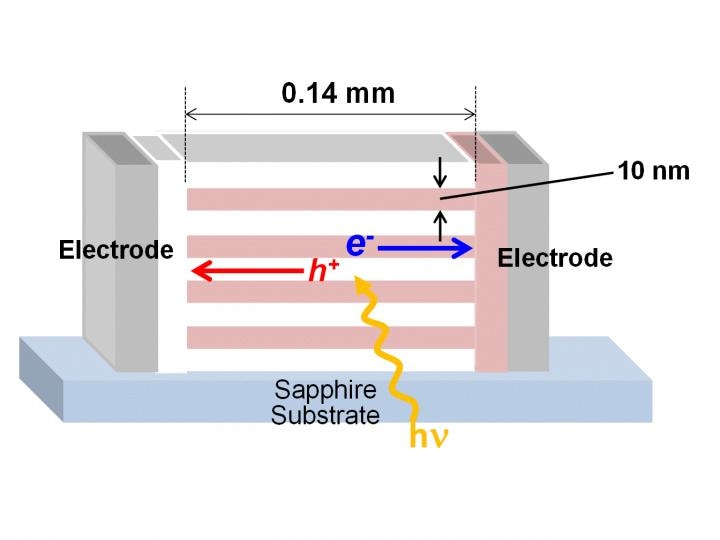Feb 20 2019
After the discovery of bulk heterojunction (blended junction) by a group of researchers in the year 1991, there has been a steady increase in the conversion efficiency of organic solar cells.
 A lateral organic alternating multilayered junction can be an alternative bulk heterojunction for organic solar cells. (Image credit: NINS/IMS)
A lateral organic alternating multilayered junction can be an alternative bulk heterojunction for organic solar cells. (Image credit: NINS/IMS)
The bulk heterojunction is presently considered to be indispensable for organic solar cells. However, the challenge in attaining high efficiency lies in the fabrication of electron and hole transport routes in blended cells.
An ideal structure is a vertical alternating multilayered structure that has fabricated vertical routes. There are still complications in the designated fabrication of such structures when using existing lithography techniques because the required aspect ratio touches 100.
The research group assumed that the need to develop a vertical route might not arise if carrier transport over an elongated distance parallel to the substrate becomes possible.
A lateral alternating multilayered junction, a unique perception of the structure of an organic solar cell, was proposed by the research group at the Institute for Molecular Science. The fact to be noted is that the photogenerated holes and electrons are laterally transported and then extracted to the corresponding electrodes.
Electron highway and hole highway are the minimum units of the proposed junction. The group initially used ultra-high mobility organic films to prove the lateral extraction of photogenerated holes and electrons of the order of 1mm in the electron and hole highways. When compared to the standard value below 1 mm, observed macroscopic value of the order of millimeters is surprisingly long. The group next proved the fruitful operation of an organic solar cell containing a lateral alternating multilayered junction by merging the electron highway and hole highway. Over an astounding long distance (0.14 mm), an aggregate of 93% of the photogenerated electrons and holes are laterally collected. With a layer thickness of 10 nm, the exciton-collection efficiency touches 75% in a lateral alternating multilayered junction. Hence, it has been established that the lateral junction is capable of almost entirely collecting both carriers and excitons.
It is thus possible to consider a lateral alternating multilayered junction to be an alternative bulk heterojunction for organic solar cells. A lateral cell is recognized for its infinite thickness in the vertical direction. Hence, it is now possible to design tandem solar cells capable of utilizing the complete solar spectrum. The existing new concept makes way for surpassing the conversion efficiency of organic solar cells beyond 20%.
Source: http://www.nins.jp/english/